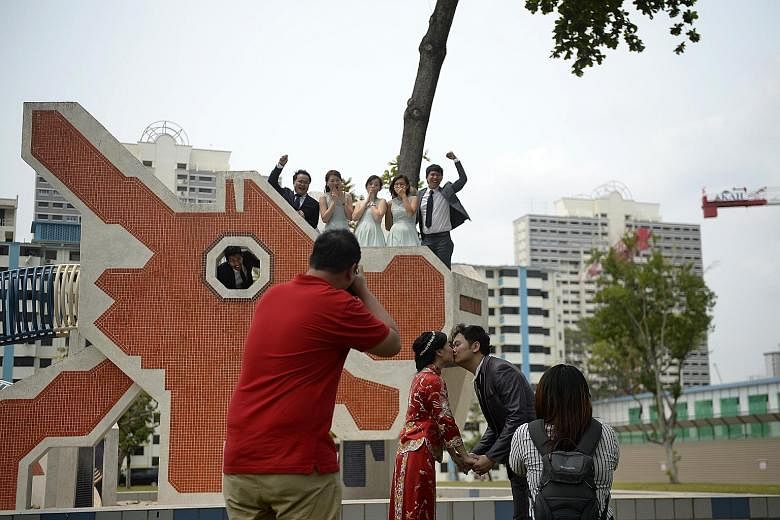An estimated 15,000 people have benefited from the haze subsidy in the past 10 days.
The Government aid means they need to pay no more than $10 when they see a doctor for haze-related medical problems. Pioneers pay $5.
The number of patients tapping the subsidy appears to be far higher than in 2013, when only 20,500 people used it over the four months of haze. Part of the reason is the extension of the benefit to the 450,000-
strong Pioneer Generation - those aged 16 and above in 1965.
However, doctors say they are seeing many more patients who are ineligible for the subsidy who are suffering haze-related problems such as breathing problems, runny nose, eye irritations, eczema and even pneumonia.
Dr Lam Pin Min, Minister of State for Health, who visited three participating GPs in Simei yesterday morning, said claims from GPs take at least a month to reach the ministry.
Polyclinics have seen 2,200 such patients since the scheme started on Sept 16. During the 2013 haze, polyclinics saw about 15 per cent of such patients, he said.
Dr Kelvin Goh, who sees about 100 patients a day at his clinic at the Simei MRT station, said about 20 to 30 of these appear to have haze-related respiratory problems.
Others say the haze triggered their eczema, sinus problems or asthma but he added that not all are eligible for the subsidy.
Dr Teoh Oon Hoe, head of respiratory medicine at KK Women's and Children's Hospital (KKH) has advised parents whose children suffer from asthma to ensure that they take their medicine, especially if they develop shortness of breath.
"A surge in the three-hour PSI increases the risk of asthma exacerbations in such children," he said.
His colleague, Dr Edwin Thia, who deals in maternal foetal medicine, said there is "no strong evidence to suggest that short-term exposure" would affect unborn children, as all studies have been on prolonged exposure to pollutants causing low birth weight, pre-term birth and intrauterine growth restriction.
But he added: "As a precaution, we would advise that pregnant women reduce exposure to haze for the health of their unborn baby."
Meanwhile, public hospitals are keeping the windows in their subsidised wards closed to prevent the haze from affecting their patients, many of whom are elderly.
About four in five public hospital beds are in subsidised B2 and C class wards, which are naturally ventilated, with no air conditioning.
A spokesman for Changi General Hospital (CGH) said it is "managing the wards' temperature through the use of portable air-condition units in addition to our spot cooling system". It also uses portable fans.
Aside from portable air-conditioners, the National University Hospital (NUH) is using air purifiers in its subsidised wards. It has also added filters to some of the air-conditioning systems to minimise pollutants in the air.
Ms Joanne Yap, chief operating officer of the new Ng Teng Fong General Hospital, said its centralised air filter system is able to filter up to 80 per cent of synthetic dust and 95 per cent of air particles.


